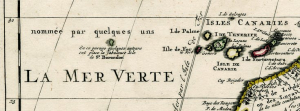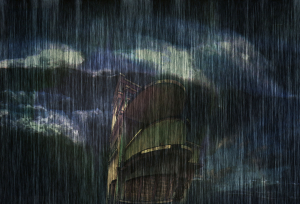Borondon
Sound pictures for the book “wachten op een eiland”. Borondon is also known as the lost island
2008/2013 (7′10″)
In 2008, the Belgian writer Marc Legendre asked me to create a sound collage for his graphic novel “Wachten op een eiland”. In terms of content, the novella refers to the centuries-old fictional story about the Canary Island of “Borondon”, which sometimes emerges from the fog but has never been discovered and thus does not exist in reality. “Borondon” is a pipe dream, similar to Loch Ness and Nessie.
The novella was published without music. For these reasons, in spring 2013 I produced a small video to accompany the accompanying drawings and texts, showing the audiovisual conception that was planned at the time.
The music is indirect, i.e. here too the listener imagines himself in a mist of sound. People speak to each other in the distance, one can understand little, everything seems to be immediate, present but not tangible.
For a small concert in 2013, which by the way did not take place, I added a double bass part to the sound picture.
We see a scene from the graphic novel “Wachten op een eiland” by Marc Legendre. Long ago, the house where Adan Diss lived stood for a bright future. But as time passed, it fell into a state of complete decay, symbolising the state of mind of Adan Diss.
After a long day of waiting for his island to appear, Adan Diss goes home and returns to his nightmares.
In ‘Waiting on an Island’, Adan Diss, a Loner, stands on the beach, waiting for San Borondón to appear.
He sees no future in the village where he was born and dreamed of a good life on the mythical island. Adan Diss is convinced that one day the island will appear and he will be ready to leave.
Alone, that is.
But he is getting famous by standing on the beach every day and other people start sharing his dream. For the first time in his life, Adan Diss decides to take action. The first mention of La Isla de San Brandán (Brendán, Barandán, etc.) was in the Latin text ‘Navigatio Sancti Brendani abatis’ in the ninth century. The island was named after Saint Brendan who landed on it in 512 and appeared on numerous maps in Columbus’ time.
It was probably located north-west of El Hierro and leeward of La Palma.
Later it disappeared from all maps, became a ghost island and was nicknamed “La Isla perdida” (the lost island).


